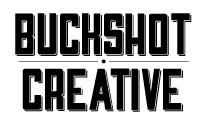I was listening to an episode of the Tell Me Something I Don’t Know podcast, and an interesting concept came up from a study in the 1980’s. According to CalTech Behavioral Economics Professor Colin F. Camerer, students were asked trivia questions while their brains were being scanned for activity. Scientists were able to map out where curiosity lies within our brains (the Nucleus Encompass, Parahippocampus, and Mid-Brain), and additionally were able to see brains reacting to curiosity.
When asked a trivia question (What animal other than humans are prone to sunburns?*), if the subject had no clue what the answer was, their brains showed no activity toward wanting to get this information. Equally, if they knew the answer, there as no additional activity. But if they knew a little bit, like they knew they had heard the answer in the past but couldn’t remember the answer now, the curiosity centers in their brain had greater activity. They concluded that our brains are more equipped to be stimulated than satisfied, and knowing a little bit is more engaging than knowing or not knowing.
Where this could be an interesting opportunity in marketing is how we’d want to engage audience’s attention and focus. If we were to introduce a skincare product with an exclusively special serum that will enhance and preserve skin, audiences will not likely be engaged, because they either will know or not know about this product. However, if you were to describe the product using information the audiences already partially know, their brains will trigger a more engaging response.
So instead of saying, “our skincare product features X serum that enhances your skin,” a more engaging method would be to say, “What 3 ingredients can enhance your skin? Omega 3 fatty acids, all-natural coconut oil, and… X serum.” By utilizing the common knowledge of your audience, you can utilize the memory enhancing curiosity facets of the brain to your marketing.
* (Answer: pigs).

